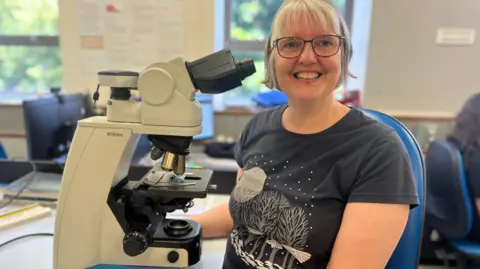Hay fever season has started early, expert says
 BBC
BBCThe recent warm weather has brought about an early start to hay fever season, an expert has said.
Dr Fiona Symon, experimental officer in respiratory sciences at the University of Leicester, has been using new technology to monitor pollen levels in recent weeks.
The Swisens Poleno Jupiter machine, which analyses pollen in real-time, was set up in Leicester last year and is one of only three in England, with the other two in Birmingham and Manchester.
Dr Symon said her analysis showed very high levels in the first week of April.
Previously, the pollen forecast relied on time-consuming microscope studies of air samples, delaying important information.
Dr Symon said the new device automated what had been a "very much labour intensive" job.
"I've sat the whole day counting pollen at the microscope but the new machine automates all of that," she said.
"I could tell you what the pollen levels were now, whereas with the old method you'd have to wait until next week."

Dr Symon said the technology showed that birch pollen season had started and reached high levels between 1 and 7 April.
"Birch is the tree pollen that most people are allergic to," she said.
"The sun's been out, it's been warm and we've had a breeze to move the pollen around. So it's been perfect weather for trees for pollinating, but not so much for hay fever sufferers.
"The warm weather has influenced the level of pollen released. We've seen high to very high levels of birch pollen right from the start of the pollen release rather than a more gentle build-up.
"Hornbeam also reached high levels, which could add to the allergic response to birch as both trees belong to the same family and share similar allergens.
"The Poleno showed that pollen levels remained significant well into the evening and on the milder evening of 4 and 5 April, it was present until 03:00 BST."
She predicts it will be a high birch pollen year and advised server hay fever suffers to seek help from a pharmacist.
Preventative advice includes putting a petroleum jelly-based product around nostrils to create a barrier to trap some pollen and prevent inhaling as much.
Dr Symon added the university's pollen count data for Leicester is provided to the Met office and can be found on its website.
Follow BBC Leicester on Facebook, on X, or on Instagram. Send your story ideas to [email protected] or via WhatsApp on 0808 100 2210.
